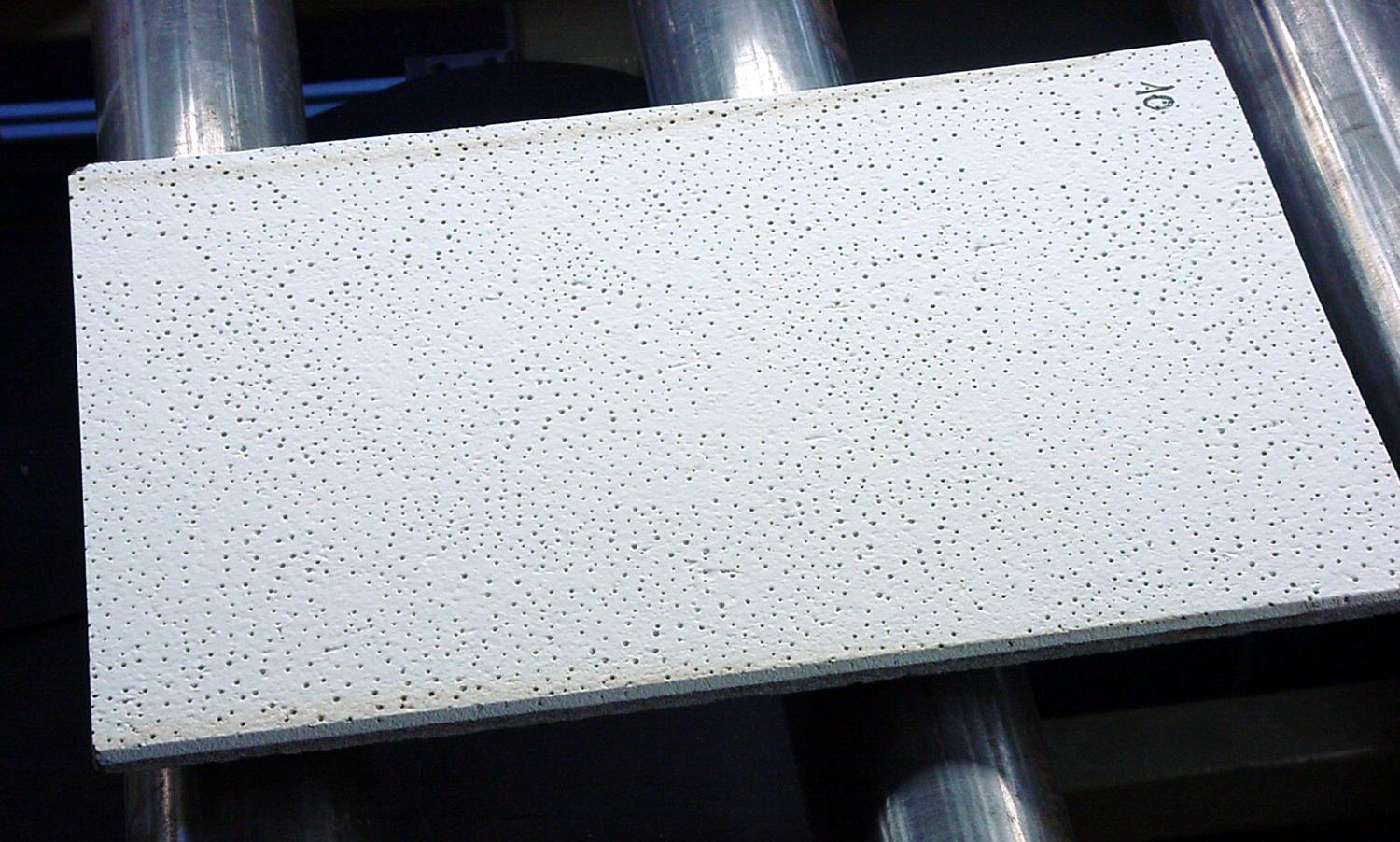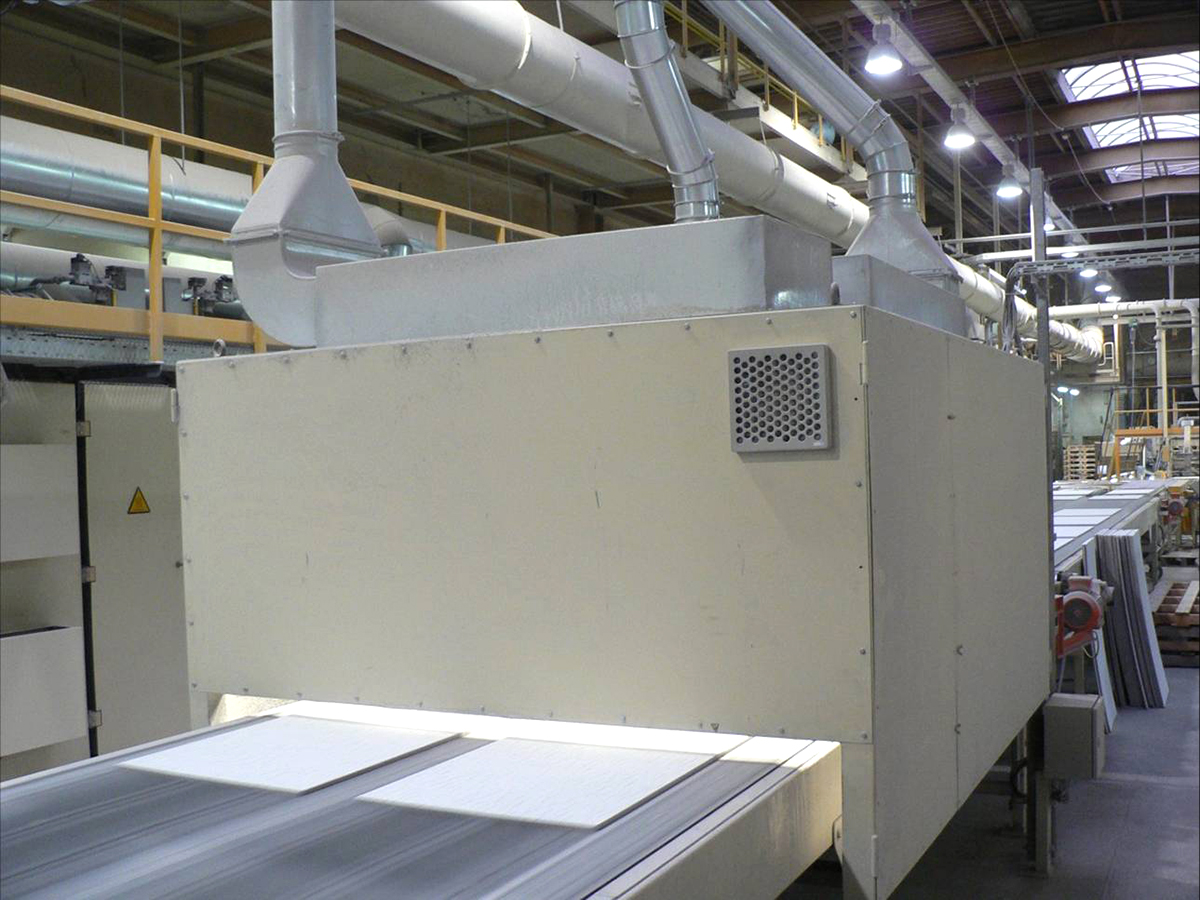Ceilings are used in buildings for fire control, heat insulation, and to upgrade the room acoustics. They are available in many different surface designs, each with other acoustical attributes. Surface defects not only reduce the overall visual impression, but also often reduce the above-mentioned functionality of the panels.
The inspection system MASC-STEX has been developed for the quality control of ceilings. The development was done in cooperation with the Aschaffenburg University of Applied Sciences (UAS). The system is able to perform a reliable detection of a variety of defects (e.g. scratches, abrasive spots or imperfect design) on many different designs. Since 2003 MASC-STEX is used successfully at a major manufacturer of ceilings in Germany.


